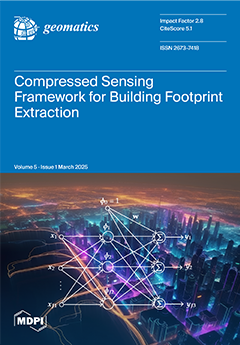Individual tree parameters are essential for forestry decision-making, supporting economic valuation, harvesting, and silvicultural operations. While extensive research exists on uniform and simply structured forests, studies addressing complex, dense, and mixed forests with highly overlapping, clustered, and multiple tree crowns remain limited. This
[...] Read more.
Individual tree parameters are essential for forestry decision-making, supporting economic valuation, harvesting, and silvicultural operations. While extensive research exists on uniform and simply structured forests, studies addressing complex, dense, and mixed forests with highly overlapping, clustered, and multiple tree crowns remain limited. This study bridges this gap by combining structural, textural, and spectral metrics derived from unmanned aerial vehicle (UAV) Red–Green–Blue (RGB) and multispectral (MS) imagery to estimate individual tree parameters using a random forest regression model in a complex mixed conifer–broadleaf forest. Data from 255 individual trees (115 conifers, 67 Japanese oak, and 73 other broadleaf species (OBL)) were analyzed. High-resolution UAV orthomosaic enabled effective tree crown delineation and canopy height models. Combining structural, textural, and spectral metrics improved the accuracy of tree height, diameter at breast height, stem volume, basal area, and carbon stock estimates. Conifers showed high accuracy (R
2 = 0.70–0.89) for all individual parameters, with a high estimate of tree height (R
2 = 0.89, RMSE = 0.85 m). The accuracy of oak (R
2 = 0.11–0.49) and OBL (R
2 = 0.38–0.57) was improved, with OBL species achieving relatively high accuracy for basal area (R
2 = 0.57, RMSE = 0.08 m
2 tree
−1) and volume (R
2 = 0.51, RMSE = 0.27 m
3 tree
−1). These findings highlight the potential of UAV metrics in accurately estimating individual tree parameters in a complex mixed conifer–broadleaf forest.
Full article





